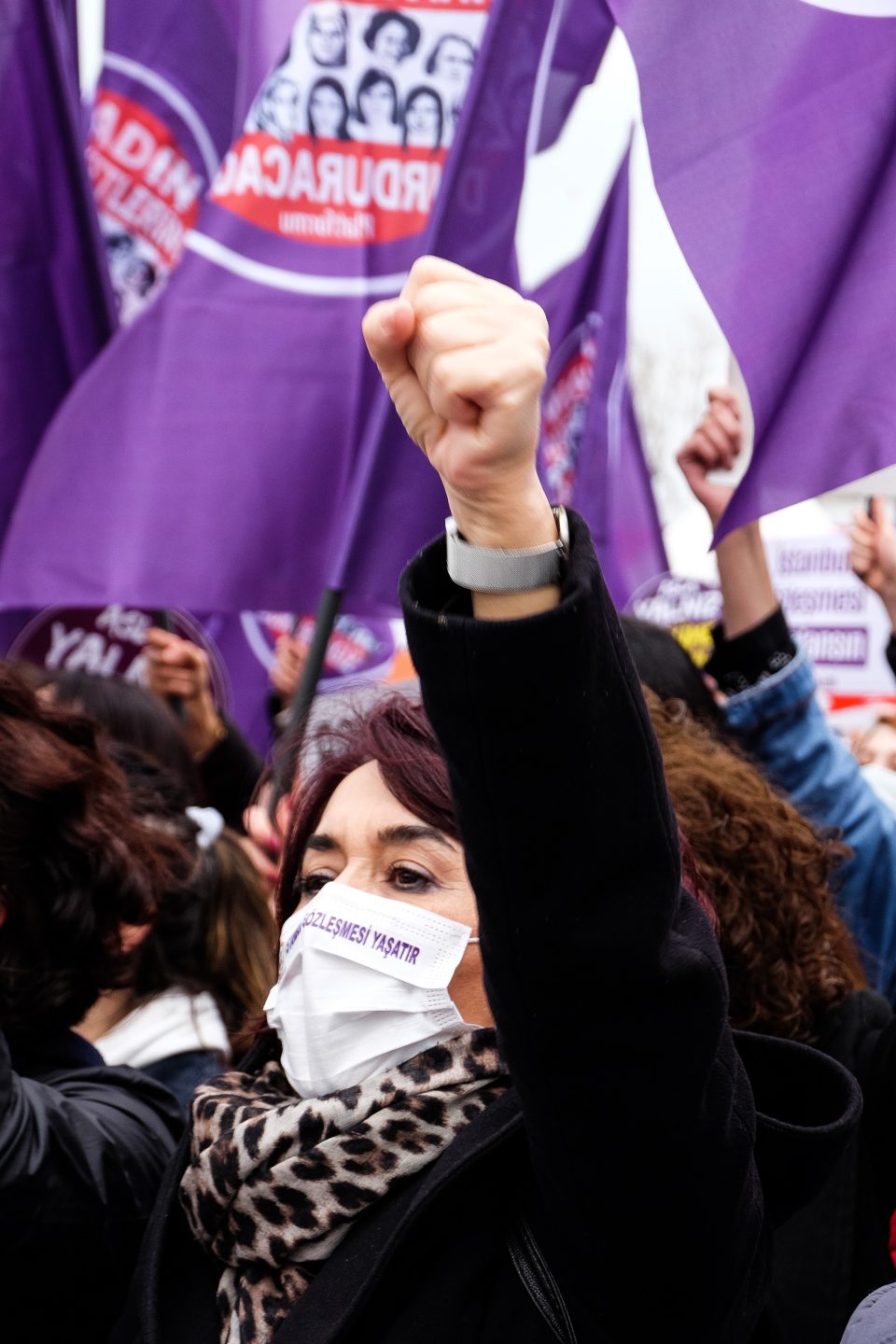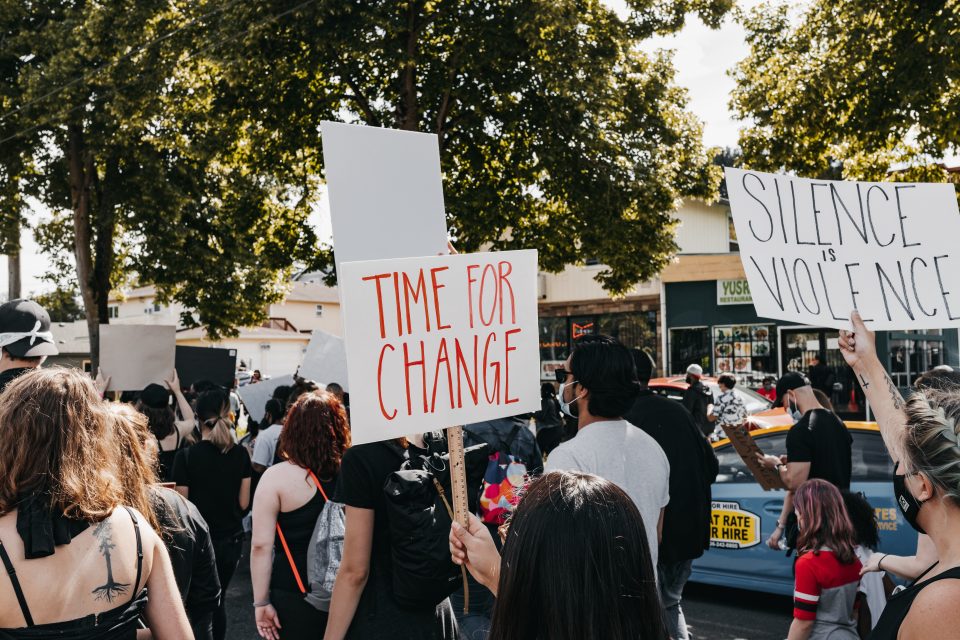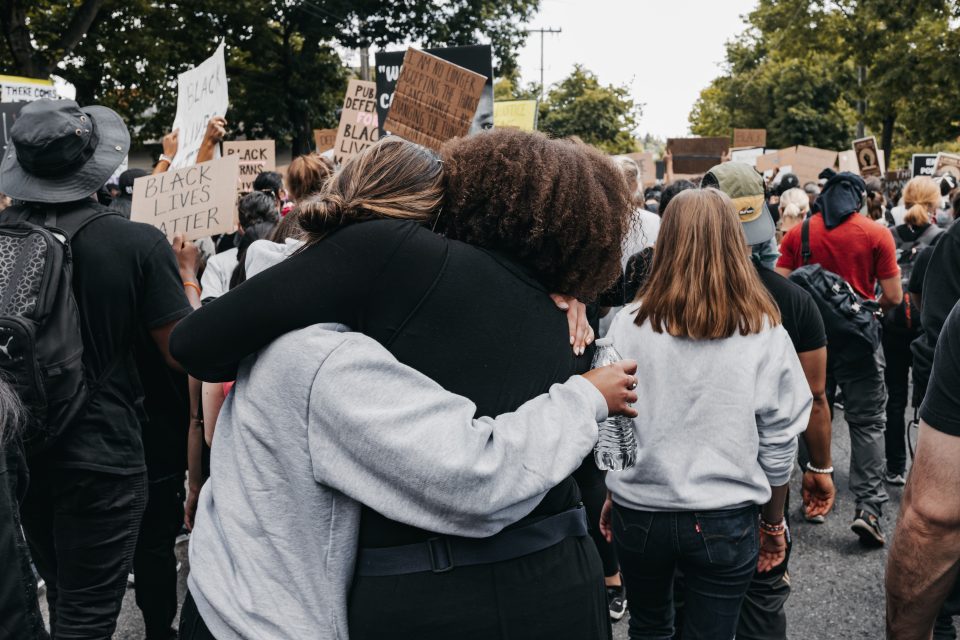
The Council of Europe Convention on preventing and combating violence against women and domestic violence, better known as the Istanbul Convention, is the treaty of the Council of Europe aimed to fight violence against women and domestic violence. It was signed on May 11, 2011, in Istanbul, Turkey. As of March 2019, it has been signed by 45 countries and the European Union. However, during the following years, some countries are still yet to ratify the convention, and in 2021, Turkey became the first and only country to withdraw from the convention, after denouncing it on 20 March 2021.

SIGNED AND RATIFIED || ONLY SIGNED || NOT SIGNED || FORMER PARTY || NOT SIGNED
According to the official CoE website, The Istanbul Convention is based on the understanding that violence against women is a form of gender-based violence that is committed against women because they are women. It is the obligation of the state to address it fully in all its forms and to take measures to prevent violence against women, protect its victims and prosecute the perpetrators. Failure to do so would make it the responsibility of the state. The convention leaves no doubt: there can be no real equality between women and men if women experience gender-based violence on a large-scale and state agencies and institutions turn a blind eye. Because it is not only women and girls who suffer domestic violence, parties to the convention are encouraged to apply the protective framework it creates to men who are exposed to violence within the family or domestic unit. Nevertheless, it should not be overlooked that the majority of victims of domestic violence are women and that domestic violence against them is part of a wider pattern of discrimination and inequality.
KEY TERMS
- violence against women is a “violation of human rights and a form of discrimination against women and shall mean all acts of gender-based violation that result in, or are likely to result in physical, sexual, psychological, or economic harm or suffering to women including threats of such acts, coercion or arbitrary deprivation of liberty, whether occurring in public or private life”,
- domestic violence: all acts of physical, sexual, psychological or economic violence that occur with the family or domestic unit or between former or current spouses or partners, whether or not the perpetrator shares or has shared the same residence with the victim.”
- gender means “the socially constructed roles, behaviours, activities and attributes that a given society considers appropriate for women and men.”
- gender-based violence against women means “violence that is directed against a woman because she is a woman or that affects women disproportionately.”
THE STRUCTURE
The convention contains 81 articles separated into 12 chapters.
The structure of the instrument is based on the “four Ps”: Prevention, Protection and support of victims, Prosecution of offenders and Integrated Policies.

PREVENTION
In simple terms, preventing violence against women and domestic violence can save lives and reduce human suffering. Governments that agree to be bound by the Convention will have to do the following:
- train professionals in close contact with victims;
- regularly run awareness-raising campaigns;
- take steps to include issues such as gender equality and non-violent conflict resolution in interpersonal relationships in teaching material;
- set up treatment programmes for perpetrators of domestic violence and for sex offenders;
- work closely with NGOs;
- involve the media and the private sector in eradicating gender stereotypes and promoting mutual respect.
Preventing violence against women and domestic violence should not be left to the state alone. In fact, the Convention calls on all members of society, in particular men and boys, to help reach its goal of creating a Europe free from all forms of violence against women and domestic violence. Violence against women is pervasive because misogynistic attitudes towards women persist. Each and every one of us can help challenge gender stereotypes, harmful traditional practices and discrimination against women. It is only by achieving real gender equality that violence against women can be prevented.
PROTECTION
When preventive measures have failed and violent incidents have happened, it is important to provide victims and witnesses with protection and support. This means police intervention and protection as well as specialised support services such as shelters, telephone hotlines etc. It also means making sure that general social services understand the realities and concerns of victims of domestic violence and violence against women and support them accordingly in their quest to rebuild/resume their lives.
Some examples of measures set forth in the Convention include:
- Granting the police the power to remove a perpetrator of domestic violence from his or her home: In situations of immediate danger, the police need to be able to guarantee the safety of the victim. In many instances, this may mean ordering the perpetrator for a specified period of time to leave the family home and to stay away from the victim.
- Ensuring access to adequate information: After experiencing violence, victims are usually traumatised and need easy access to clear and concise information on available services, in a language they understand.
- Setting up easily accessible shelters in sufficient numbers and in an adequate geographical distribution: Victims come from a wide range of social realities. For instance, women from rural areas or disabled women need to have access to shelters as much as women from big cities.
- Making available state-wide 24/7 telephone helplines free of charge: Specialised helplines for victims of violence against women and domestic violence can direct the victims to the services they need. They are essential in offering immediate expert advice and pointing victims towards safety.
- Setting-up easily accessible rape crisis or sexual violence referral centres: These centres provide immediate medical counselling, trauma care and forensic services and are extremely rare across Europe. It is important to make these services more widely available.
It should be borne in mind that it is not enough to set up protection structures and support services for victims. It is equally important to make sure victims are informed of their rights and know where and how to get help.
PROSECUTION
The convention defines and criminalises the various forms of violence against women as well as domestic violence. This is one of the many achievements of the convention. To give effect to the convention, state parties will have to introduce a number of new offences where they do not exist. These may include: psychological and physical violence, sexual violence and rape, stalking, female genital mutilation, forced marriage, forced abortion and forced sterilisation. In addition, state parties will need to ensure that culture, tradition or so-called “honour” are not regarded as a justification for any of the above-listed courses of conduct.
Once these new offences have found their way into the national legal systems, there is no reason not to prosecute offenders. On the contrary, state parties will have to take a range of measures to ensure the effective investigation of any allegation of violence against women and domestic violence. This means that the law enforcement agencies will have to respond to calls for help, collect evidence and assess the risk of further violence to adequately protect the victim.
Furthermore, state parties will have to carry out judicial proceedings in a manner that respects the rights of victims at all stages of the proceedings and that avoids secondary victimisation.
INTEGRATED POLICIES
The convention is based on the premise that no single agency or institution can deal with violence against women and domestic violence alone. An effective response to such violence requires concerted action by many different actors. The convention, therefore, asks state parties to implement comprehensive and coordinated policies involving government agencies, NGOs as well as national, regional and local parliaments and authorities. The aim is that policies to prevent and combat violence against women and domestic violence are carried out at all levels of government and by all relevant agencies and institutions. This can, for example, be done by drawing up a national plan of action that assigns each agency a particular role to take on or a task to fulfil.
The experience from countries where this is already being done shows that results are improved when law enforcement agencies, the judiciary, NGOs, child protection agencies and other relevant partners join forces on a particular case.
In addition to addressing governments and non-governmental organisations, national parliaments and local authorities, the convention sends a clear message to society as a whole. Every man, every woman, every boy and girl, every parent, every boy/girl-friend must learn that violence – any kind of violence – is not the right way to solve difficulties and live a peaceful life. Everybody must understand that now and in the future violence against women and the domestic is no longer tolerated.

MONITORING
The Istanbul Convention sets up a monitoring mechanism to assess how its provisions are put into practice and to provide guidance to state parties.
This monitoring mechanism consists of two distinct, but interacting bodies:
- an independent expert body, the Group of Experts on Action against Violence against Women and Domestic Violence (GREVIO), which is composed of 15 members. GREVIO draws up and publishes reports evaluating legislative and other measures taken by states parties to give effect to the provisions of the Convention;
- a political body, the Committee of the Parties, which is composed of representatives of the Parties to the Istanbul Convention. On the basis of GREVIO’s reports, the Committee adopts recommendations concerning the measures to be taken to implement the findings contained in GREVIO’s report. It also supervises the implementation of its own recommendations.
